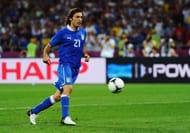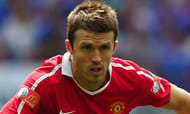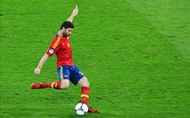Back in the 1990′s, flamboyant France and Manchester United star Eric Cantona derisively labelled Didier Deschamps, the captain of the 1998 World Cup winning French team, a ‘water carrier’. The current Les Bleus coach, who used to play as a central defensive midfielder, did not for sure have the skill and panache of a Zinedine Zidane, Cristophe Dugarry or a Youri Djorkaeff. But his importance to the side lay in the fact that his constant presence in front of the back four enabled the likes of Zidane and Djorkaeff to focus on their attacking game, and paved the way for the French team’s first and so far only ever success in the competition. Employed in a similar role at Juventus, Chelsea and Marseille among other clubs during his career, Deschamps is a true success story, maximising his potential for the best of his team.
In today’s world, for every Cristiano Ronaldo, Lionel Messi, Wayne Rooney or Sergio Aguero, there is a Xabi Alonso, Sergio Busquets, Michael Carrick or Gareth Barry. Specialising in the unspectacular, making consistency their hallmark, these modern-day ‘water carriers’ are- in many ways, adaptations of the Deschamps 2.0 model.
The fast-paced, pass-and-move nature of football today makes it more and more difficult for a pure defensive midfielder to find a spot in top quality sides. The focus is now more on the sort of player who presents a wide range of pin-point passing, capable of sitting in the hole between defense and attack and orchestrating play from that role.
Veterans Andrea Pirlo and Paul Scholes still display masterclass in this role, which ironically enough, is one both of them have adapted to over the course of time. The tactical acumen of both Pirlo and Scholes enabled them to improve their attacking, box-to-box styles into one that suited their age, helping them preserve their legs for a longer time.
Among the younger (comparatively) crop, Yaya Toure is in a class of his own. The major reason behind Manchester City‘s title run last year, the younger Toure is however, not just a classic Deschamps model.
The Ivorian is next to impossible to contain when he has the ball at his feet and has one of the sharpest minds in the game when it comes to reading situations – defensive and offensive. While he is arguably at his most destructive when playing in a deeper role, City’s manager Roberto Mancini has of late shown an inclination to employ him further up the pitch, especially against weaker opposition.
But even at City, Toure depends a lot on the yeoman service provided beside him by the likes of Gareth Barry, Javi Garcia, Jack Rodwell, and in the past, Nigel de Jong. Barry’s contribution to the Blues’ game is particularly important. With the England man out injured early in the season, City struggled to get their game going, as summer signing Rodwell is still taking time to get used to a new setup.
Once the former Aston Villa skipper came back from injury, he provided an immediate boost to the Premier League champions’ style of play. For a former naturally left-sided winger turned defensive midfielder, Barry seems completely at ease in his central role. His range of passing is an added incentive while his defensive work is certainly commendable.
Across Manchester, Carrick provides a step-up in class compared to Barry. Wearing the number 16 made famous by the charismatic Roy Keane, Carrick is certainly not a replacement for the Irishman as he was touted to be when signed from Tottenham in 2006. Indeed, Carrick is his own man, with a range of passing possibly unsurpassed in the Premier League. A true professional you’d love to have in your side, Carrick’s career, especially for England, has been overshadowed by the more attacking options of Steven Gerrard and Frank Lampard. However, had England managers – past and present – employed him alongside one of those two, the national side might have provided better results.
Spain is an example of a national side whose international success has been driven by just that sort of a formula. When they won the Euro in 2008, Marcos Senna provided the muscle down the centre, enabling Xavi Hernandez, Andres Iniesta and the rest to do what they do best. Busquets certainly provides a lot more for Spain than Senna and fits seamlessly into the system employed by the La Roja and Barcelona.
The partnership of Alonso and Busquets is critical to Spain’s success, probably even more than the attacking players in front of them. If a Xavi or an Iniesta is out injured, the likes of Cesc Fabregas, David Silva, Santi Cazorla, Jesus Navas and others can fill in. But it would be quite a hard task to fill the boots of Alonso or Busquets.
Any successful football team, internationally or at club level, owes a lot to these players. When the Netherlands reached the final of the 2010 World Cup in South Africa, De Jong and Mark van Bommel were two of their most effective players. Sami Khedira and Bastian Schweinsteiger provide similar options for the Germans while Daniele de Rossi and Pirlo are Italy’s go-to men for these spots.
While the flashy wingers, all-action trequartistas, clinical marksmen and a solid backline are all extremely important to mould a winning combination, the link-up play and multiple options that these world class ‘water carriers’ provide are simply irreplaceable.




